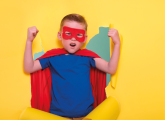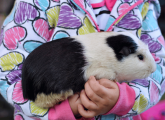You’ve probably come across the term ‘hygge’, but how does it apply to early years learning environments? Kimberly Smith explains…
The Nordic countries of Denmark, Sweden and Finland are consistently ranked at the top of the World Happiness charts year on year.
Many put that down to their approach to living known as hygge (pronounced ‘hue-guh’). This has received lots of attention in recent times – it even made the shortlist for Collins’ ‘Word of the Year’ a few years back.
Increasingly, it’s also being talked about in the context of early years settings. You might be wondering what it’s all about and how you might go about embracing it. If so, read on…
Put simply, hygge is a Danish attitude to life that focuses on living in the moment and feeling the joy there is in everyday routines and activities.
It could be the togetherness you enjoy as you come together as a family. Or it might be the cosy warmth you feel as you’re sat on the sofa reading a book next to a crackling fire while it’s snowing outside.
When I started my hygge journey it was a way of recognising that we need to change how we as educators work in the early years. This was after reflecting on the pressures we put on ourselves and on the children in our settings.
Through my travels and explorations around Scandinavia I began to see that this way of living wasn’t just a trend that would come and go. It equally wasn’t a luxury or something that money could buy into.
Lastly, it required more than an overnight transformation. Hygge is a long-term investment in your own self-care and a commitment to looking out for those around you. And it’s one that I believe can make a positive difference in early years settings.
Meik Wiking from the Happiness Research Institute in Copenhagen (and the author of The Little Book of Hygge) believes that there are ten distinct elements that must be considered when adopting a hygge lifestyle:
Atmosphere – creating a calm vibe.
Presence – not being on your phone and living in the moment.
Pleasure – life should be fun, enjoyable and bring great happiness.
Equality – no one is better than anyone else.
Togetherness – spend time with people you care about and those that make you smile.
Gratitude – take time to reflect on what you’re grateful for.
Harmony – life is not a competition.
Truce – there’s no need for arguments.
Comfort – relax, wear fluffy socks and be cosy.
Shelter – your home is important.
Taking this as a starting point, I believe there are many simple, practical ways that we can bring the hygge philosophy into our provision. Here are a selection you might like to try:
The team at Daisy Chain Nursery have been working hard to bring the hygge feeling into their environment.
When the decision was made to change the nursery’s approach, the team started by adapting the furniture and muting the colouring. This was to create a more natural feel.
The team immediately noticed a change in the behaviour of the two-year-old children, as well as the children who have special educational needs.
The children seemed a lot calmer. The environments in general seemed less frenetic. Children were engaged by the toys and the activities on offer rather than being overstimulated by their surroundings.
The team also noticed that the children were settling in much quicker. A lot of the decorative objects they added were items children would likely find in their own homes. Meanwhile, the natural colours were helping them feel more comfortable.
The nursery began the process in the baby room, starting by adapting the way work was displayed. They also purchased new rugs and fresh equipment to make the room look more natural.
Plants were introduced to the environment and natural-coloured materials and warm white lighting combined to give the room a cosy feel that you felt as soon as you walked in.
The team used a lot of soft furnishings and added a teepee filled with wooden and natural loose parts for exploration.
They then moved on to the two-year-old provision. There was some concern at this point about how practitioners would fit the relevant learning into the home-from-home approach.
However it was quickly established that the process is more focused on how you display the items you have, as well as the impact moving away from ‘toys’ can have on the children.
The team built a large sandpit and made it into a natural, communication-friendly space. This has had a big impact on the children as they have a safe space to go and play where they are able to use their whole bodies.
More natural resources were added to the preschool room. Originally, most of the existing furnishings were retained. However, the team is currently in the process of adapting both furniture and resources to create an even cosier area following the purchase of the business’s second setting.
From the outset, the team worked to transform their new setting following their home-from-home approach. The new nursery is in an old Victorian house, and ‘hygge’ suited the character of the building a lot more, so they were able to quickly revamp the areas and make them cosy and natural.
Again, this had an immediate impact on children, calming their behaviour and helping practitioners understand how to use the continuous provision as a learning resource.
The preschool room within the new setting is one of the best natural learning environments the team have created so far, illustrating how the process is continuously evolving.
Using a hygge approach, there are some simple changes we can all make to our provision to help us feel calmer and enjoy every day.
Think about what your children and team need. If you give it a go, be sure to make time for regular reflections on how the transformation is going and the impact it’s having on all those involved.
Kimberly Smith has worked in early years for 15 years as a teacher and leader. She is the author of Hygge in the Early Years.

Rough and tumble play – Why you should say yes to it
Editors picks

Pets in school – Does your setting need an animal?
Editors picks
